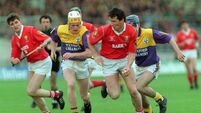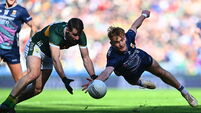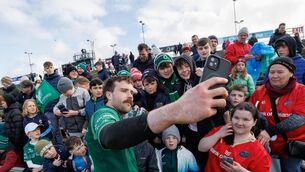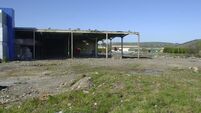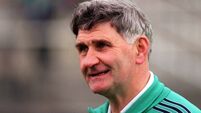Duncan Casey: Connacht have sown seeds by making rugby accessible and relatable

Connacht's Bundee Aki signs autographs after the game Pic: ©INPHO/Laszlo Geczo
Irish rugby stepped outside its urban comfort zone on Saturday as 27,000 people packed into MacHale Park, the home of Mayo GAA, to watch Connacht host Munster in a historic URC clash. Connacht appeared to have chosen the only ground in the country with more wind than the Sportsground as the venue for this special occasion but despite this, we were treated to an eight-try thriller, with no shortage of niggle, that went right down to the wire.
When we talk about Irish rugby needing to broaden its horizons to grow and diversify its playing pool, this is what we mean. I’m not naïve enough to think it’s straightforward to put together a spectacle like this in someone else’s stadium but that doesn’t change the fact that the formula is a simple one. The return on investment that comes from playing a one-off game of note in a place like Castlebar, Thurles, Kilkenny or Clones is huge.
You can be sure a strong cohort of people in attendance Saturday were talking about the game for weeks in advance and given how brilliant a contest it was, they will be talking about it for weeks to come. The pre-match media was full of references to what a great buzz there was around Mayo in the lead up to the game and how grateful the locals were to have the opportunity to watch a local derby on their doorstep. The old adage ‘build it and they will come’ rings very true here.
Make it accessible. Make it relatable. Give people who have never been to a rugby game a taste of what makes it unique. It’s only by planting these seeds that we can expect any meaningful growth. We are fortunate in Ireland to have an abundance of GAA stadiums that are ready made for such events. Not every county board will be as receptive as Mayo have been here but there is no shortage of options.
It was heartening over the weekend to see Munster announce that a Champions Cup game will be held in Páirc Uí Chaoimh in December. Plenty of criticism has been levelled at the province for their failure to stage a competitive game there, given the success of the exhibition games against South Africa and the Crusaders. Clearly, work has been going on in the background and has now come to fruition, and we should acknowledge this is a major step forward.
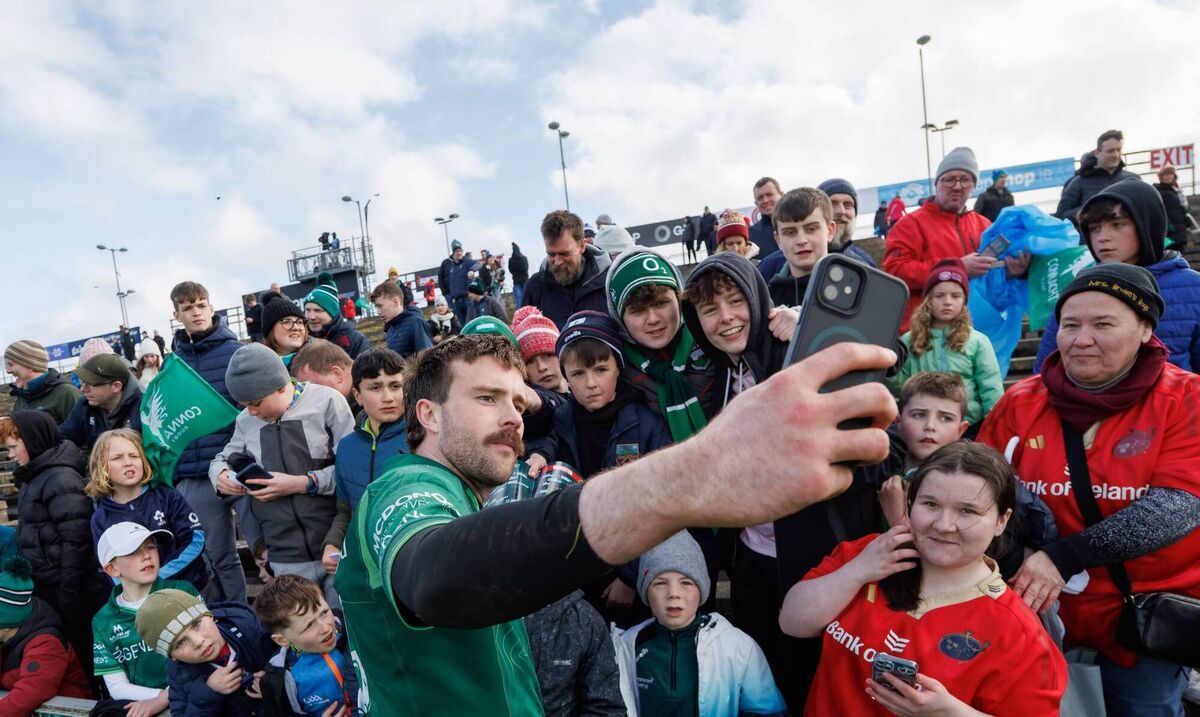
I genuinely believe that if each province could host one game of note in a different town each season, it would do more for the growth of the sport nationally than most people could fathom. That’s a conversation for another time, however, and right now all we can do is tip our hat to Connacht for blazing a trail with this bold endeavour and making it a success.
For Munster, this was a gutsy display that could well galvanise the group as they enter the business end of the season. They had a multitude of curveballs thrown at them – not least playing 55 minutes with 14 men and 13 minutes with 13 – but they found a way to weather the storm at each turn, find a way out and get back on track. There was no shortage of talking points, chief of which was Alex Nankivell’s red card after 25 minutes.
The Kiwi can feel harshly done by in my opinion and had it not been for Cian Prendergast being all but knocked out by the collision, I don’t think much, if anything, would have come from it. The breakdown is a completely different situation to the tackle and to take as black and white an approach when it comes to head contact doesn’t make much sense. While there is little excuse nowadays for a shoulder connecting with a head in a tackle, I would wager this is what happens the majority of time when a poacher is cleared out of a ruck.
By its nature, getting into a position to poach the ball requires you to put your head in the line of fire. In fact, the closer you can get your head to being directly over the ball, the more difficult you are to move. You are coached to get your hips and chest as low to the ground as possible while still supporting your bodyweight. Burying your head into the ball carrier on the ground to minimise the window an offensive rucker can attack to get you away is a crucial part of weathering that storm and remaining on the ball.
Poachers should be rewarded for beating their opponents to the breakdown but ultimately, if any contact with the head is prohibited, the contest becomes redundant if the defender gets there first. It’s virtually impossible for Nankivell to make a meaningful effort to remove Prendergast as a threat without making contact the way he did, particularly with the crocodile roll now banned – something that cost Connacht the game late on.
Nankivell beats him for height and does well to get him away from the ball. It’s unfortunate that Prendergast gets a bang in the head but to me, that’s a rugby incident and one that is difficult to avoid. If we were to start giving cards every time a poacher gets a shoulder into the head or neck, it would render the game unplayable as there would be dozens of penalties in a game for that alone. As is often the case in sport, a balance needs to be struck between the letter of the law and its practical application.
While there were plenty of strong individual performance from Munster, Jack Crowley was the standout once again. I mentioned last week that Jack had unfinished business in Ireland and he played like a man with a point to prove. This was a huge game for Munster. Winning it has simply kept them on track to make the quarter finals, leading a very tight pack that sees just six points separate 5th place from 13th.
With Ulster winning on Friday, a loss on Saturday would likely have seen Munster leapfrogged by Connacht also, leaving them last of the four provinces and languishing much further down the table than they want to be. Despite everything that went against them, they needed to find a way to win. You need your big guys to show the path forward on those occasions and Crowley was instrumental in making that happen.
In addition to scoring 15 points himself, he bossed proceedings all afternoon, pulling strings in attack and leading by example without the ball. He made nine tackles – Munster’s third highest – and got through plenty of grunt work not usually associated with out-halves. If you look at Diarmuid Barron’s try in the 59th minute, it’s Jack who gets into a perfect body position to get Mack Hansen off the ball as he attempts a poach after Stephen Archer’s carry.
Out-halves aren’t generally known for their work in the breakdown but it’s a good example of how competent Jack is in every facet of the game. His defence as a 10 is exceptional and this, combined with his appetite to get stuck in and execute things effectively when called upon, are a point of difference for him. Clearing a ruck might not be the most important job a 10 does in a game but when it’s the difference between scoring a try and not, as it was on Saturday, you can be sure it won’t go unrecognised in the review.
Another out-half that showed his value was my old pal JJ Hanrahan, who is on the way back to Munster in the coming months. JJ transformed the tempo of the game when he entered after 53 minutes and added a vitality to Connacht’s attack that saw them find another gear and make their numerical advantage tell. He showed in no uncertain terms what a big loss he will be to Connacht and what a great bit of business it was from Munster to secure his services for a third time.
This is as interesting a run in to the URC as I can recall. There is a huge amount on the line and a lot of teams are not only unsure of a spot in the play-offs, they are also uncertain of qualification for the Champions Cup. With four games to go, those are exactly the kind of high stakes you want from a league competition and we can look forward to plenty of drama unfolding in the coming weeks.

